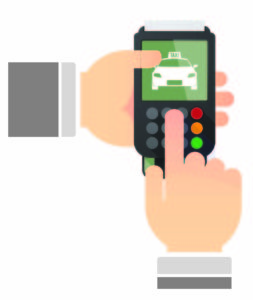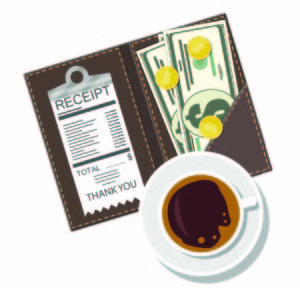The 8s
Tipping in other circumstances: Know when to tip—and how much is appropriate—with these 8 helpful tips on tipping.
September, 2018
Leaving a little bit behind for good service is deeply ingrained in our culture. Yet, how many of us really know if it’s 15-to-20 percent or 10-to-15 percent when the bill comes? To answer this question (and more) we spoke with Joanne Blake, CEO (Chief Etiquette Officer) of Style for Success Inc., an Edmonton company specializing in business image and etiquette training.

Why Tip?
“It’s a way of showing appreciation to those who provide service, especially if they go above and beyond,” Blake says.” Tipping appropriately, as she explains in her business dining seminars, is also good form—it shows respect for workers, which reflects well on your personal brand. But whether it’s business or pleasure, tipping is entirely up to the customer and should be based on the experience and level of satisfaction.
Restaurants with Table Service
In Alberta, the minimum wage for wait staff in licensed establishments was historically lower than in other industries, but not anymore. And with this soon rising to $15 per hour, some wonder if the rationale for tipping servers still holds. It does, according to Blake. “Ten percent is fair for decent service. The 15-to-20 percent range is for exceptional service or larger groups.”
Other Dining Venues
When no one’s bringing food to your table—think counter service, buffets, or take-out joints—there is arguably less chance for the kind of exceptional service that warrants a large tip. Blake suggests leaving around 10 percent for good service, though.

Tip Jars and Preloaded Tips
If you’ve used a card to pay for your morning caffeine fix, perhaps you’ve been confronted with preloaded tip options. Often, these will be high amounts like 20 or even 25 percent. Customers need not feel guilty about paying less, though. “It is unethical to force customers to tip. In this case, I would leave some coins in their jar for good service or override the preloaded amount.”
Taxis
For taxi drivers, 10 percent is the standard tip. Raise this to 15 percent for exceptional service, such as helping with heavy luggage. Or stopping on request at a favourite coffee shop, as one cabbie did for Blake on a recent trip to the airport—without adding to the fare.
Ridesharing
When it comes to services like Uber or Lyft, there has been some confusion over whether to tip or not. In fact, Uber actively discouraged tipping until recently. Blake suggests a dollar or two per person for shared rides, and 10-to-15 percent for single riders. Again, tip toward the higher end for great service.
Airport and Hotel Staff
Travellers may encounter a variety of workers at airports and hotels. For luggage handlers—porters, skycaps, courtesy shuttle drivers—the standard is $1 or $2 per bag; tip the latter amount for heavier bags or if a porter brings the bag to your room. For room service, $5 is appropriate, though Blake points out that the gratuity may be included in the bill. She also recommends tipping housekeeping: $2 a night for regular service; $5 if they bring extras.
Bad Service
The question of whether to tip for poor service might seem like a no-brainer. But consider that in many restaurants, servers share their tips with other workers. Suppose you get great service but poor food (or vice versa); not tipping at all punishes the wrong people. Blake recommends using your discretion, but being upfront about it. “You should not feel compelled to leave a tip, but you should communicate why—that way they can improve.” she says. “I would still leave a tip, but definitely lower than my usual.” t8n













